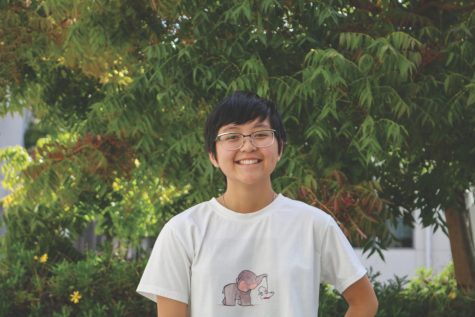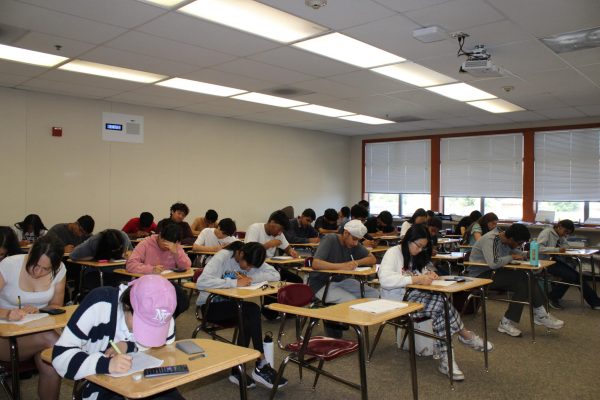‘Crazy Rich Asians’ is not total Asian representation
There has been a lot of talk of Asian representation in the media lately. “Crazy Rich Asians” recently came into spotlight for having the first all-Asian cast since 1993 when “The Joy Luck Club” came out 25 years ago.
But “Crazy Rich Asians” is not the only Asian representation we should be striving for.
In the 57 years since the first major Hollywood film with a majority Asian cast was released, there has yet to be any film that doesn’t center around East Asians.
While geopolitics and cultural borders cannot provide clear definitions, East Asians are mostly people of Chinese, Korean, Japanese, or Taiwanese descent.
Although this is not an exhaustive list, Southeast Asians are people of Burmese, Cambodian, Vietnamese, Laotian, Thai, or Indonesian descent. South Asians may be from India, Nepal, Bangladesh, Pakistan, or Afghanistan.
Despite America’s popular opinion that all Asians look the same, there are a vast number of differences between non-East Asians and East Asians.
One disparaging myth is that Asians are the same and typically the model minority, meaning they are socioeconomically more successful than other ethnic groups.
“Crazy Rich Asians” only seems to perpetuate the model minority myth by focusing on the rich ethnic Chinese, even though the movie takes place in Singapore, where most of the population is ethnic South Asian and Southeast Asian. In doing so, it effectively erases the Singaporean citizens that aren’t Chinese, such as Malays and Indians.
In fact, all Asians are praised as a whole for being better off than others. This myth is only further supported by how data often doesn’t disaggregate Asian ethnicities, which fails to show the huge intra-community gap that exists.
For example, a lot of data will show that Asian Americans overall are the highest earning ethnic group in the United States. But Asian Americans have the largest intra-community income gap compared to any other racial group.
According to an article in the New York Times, “Southeast Asian groups from countries like Vietnam, Cambodia and Laos, however, lag well behind the average for other Asian-Americans.”
Vietnamese, Lao people, and Cambodians earn a far lower income than East Asians on average. The majority of Southeast Asians make less than $60,000 per year, and less than half of each population receive any sort of higher education past high school.
According to the Southeast Asia Resource Action Center (SEARAC), more than 18 percent of Cambodian families and 27 percent of Hmong families live below the poverty line in America to this day.
Furthermore, Southeast Asians experience higher rates of domestic abuse and police brutality in America.
The rates of incarceration for Cambodian and Lao youth in America were found to be four to nine times higher than predicted for their populations.
Southeast Asian youth in America are three to five times more likely to be deported if they immigrated to America with their families to flee war and prosecution, according to SEARAC.
By no means does this invalidate the racism and struggles that East Asians face.
We’re not erasing the histories of the internment of Japanese Americans and Chinese exclusion laws.
Racism against all Asians runs rampant in America, but South Asians and Southeast Asians have become invisible to the eyes of America.
We’ve waited 25 years for another all-Asian cast movie. But we’re supposed to accept another Chinese-oriented movie without question because it “made history for Asian representation”?
Representation for who other than Chinese Asians? Telling us that we should be grateful that there even is an Asian film focusing on Chinese lives is like telling us to “shut up and wait your turn.”
Our turn could be for another 50 years if we don’t say something now.
The notion that “Crazy Rich Asians” universally represents Asians is false and instead erases their identities and the issues that South and Southeast Asians face.
When talking about Asian representation, it does not equate to just representation for East Asians. Asian representation should not be exclusive to only a fourth of Asia.
South Asians and Southeast Asians are not some obscure ethnicities who are muddled in an all-encompassing Pan-Asian identity dominated by East Asians.
“Crazy Rich Asians” did make history as a major Hollywood film with an all-Asian cast.
And “Crazy Rich Asians” is not a bad film. As a rom-com itself, it’s an enjoyable and cute movie.
But its portrayal as a contemporary film that is a major milestone for all Asians with universal Asian representation needs to be looked at with a more critical eye, preferably one that acknowledges the existence of South and Southeast Asians.


